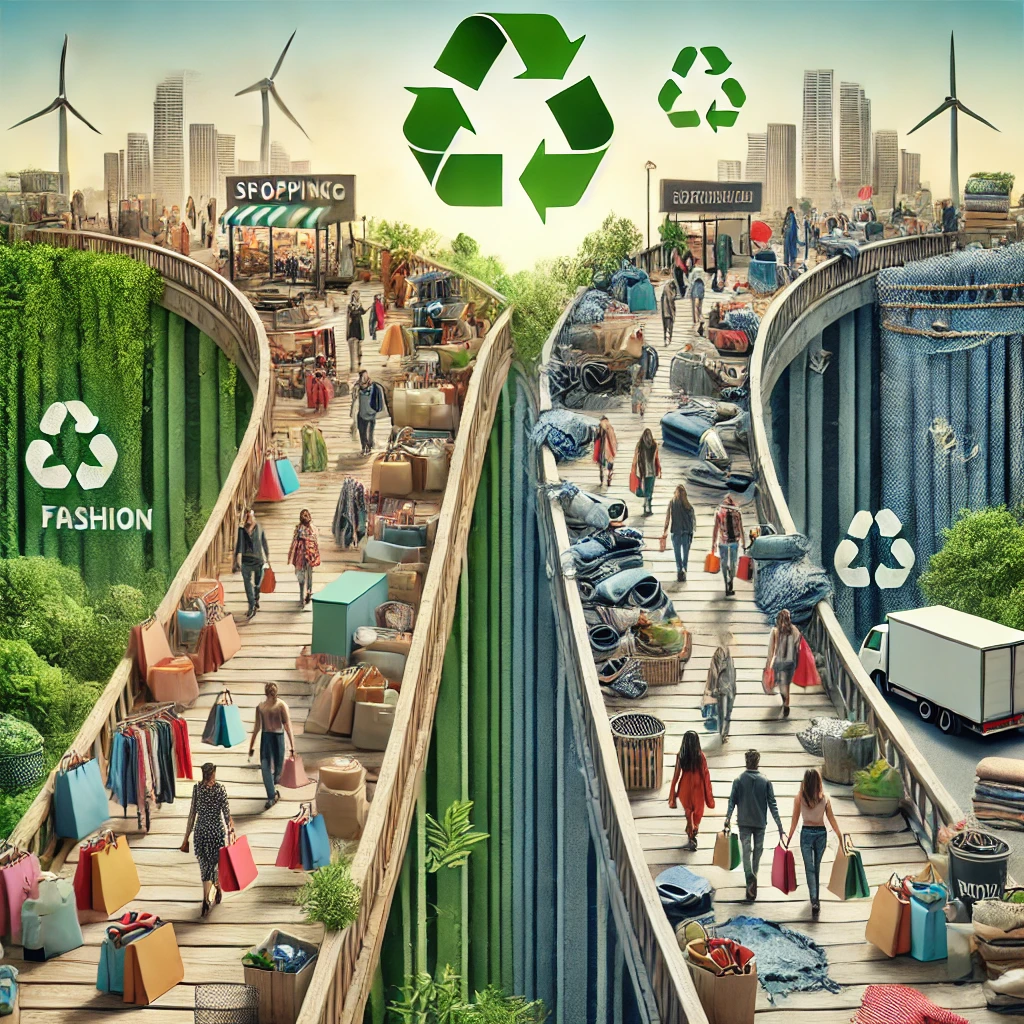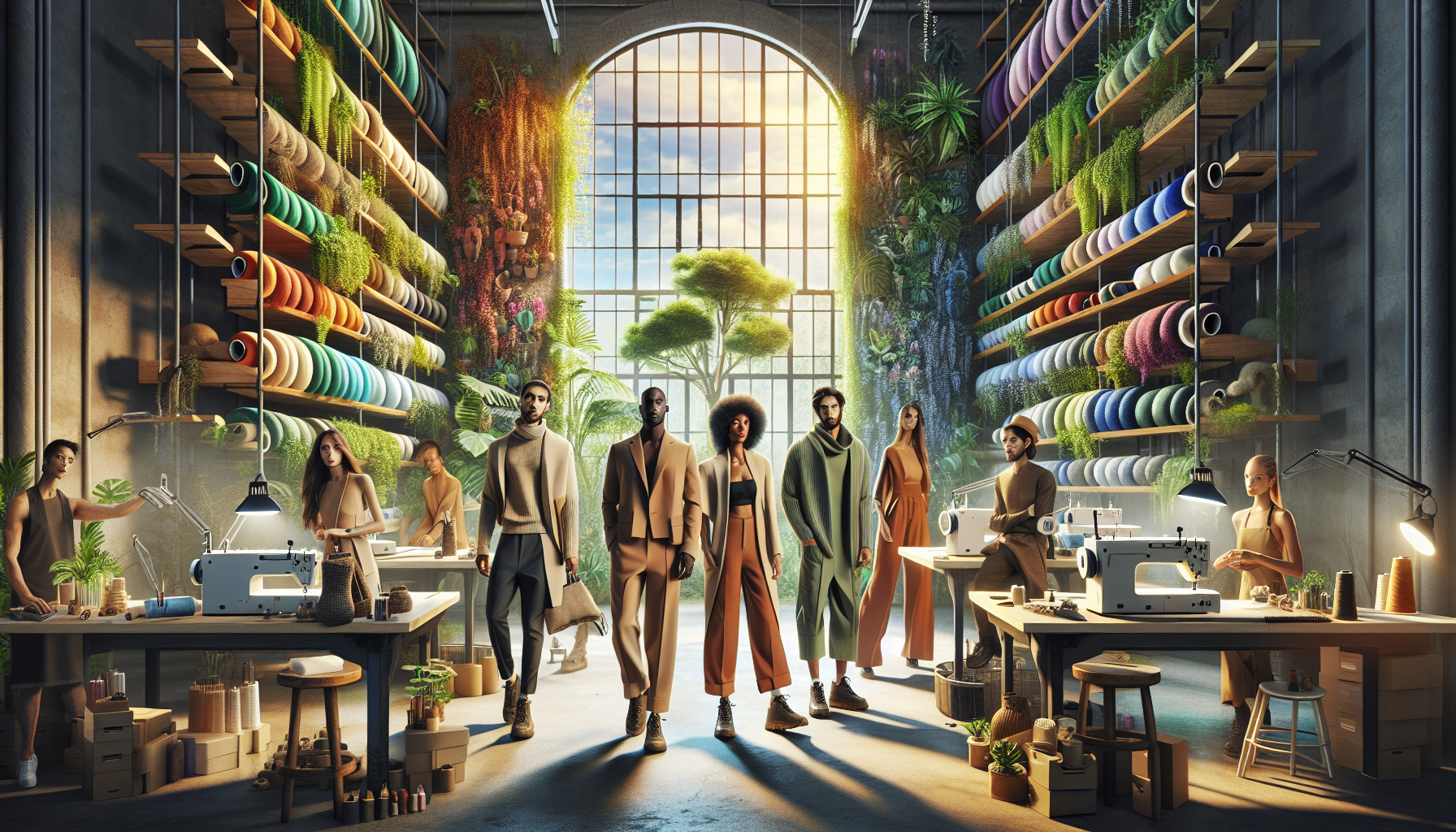In a world increasingly driven by fast fashion, the environmental impact of our clothing choices is coming into sharper focus. As sustainability becomes more important to both brands and consumers, recycled and upcycled fashion are rising as transformative solutions. Not only do they promote environmental responsibility, but they also offer a creative and personalised alternative to mass-produced clothing. Brands like Emblazer, Grandpa’s Shirts, CHERESHNIVSKA, Dorota Bojanowska, Jetti, Again & Again, Out of Stock Studio, and Stuart Trevor are leading the way in making this shift fashionable and sustainable.
What is Recycled and Upcycled Fashion?
Recycled fashion involves transforming waste materials, like used clothing or discarded fabrics, into new garments. On the other hand, upcycling refers to repurposing existing clothing or materials into something of higher value or creativity. Instead of breaking materials down, upcycling retains the original material, adding unique design elements to enhance the product.
Brands such as Grandpa’s Shirts and Again & Again excel at reworking pre-loved or deadstock clothing, combining heritage craftsmanship with modern styles to create pieces that are both nostalgic and contemporary. Out of Stock Studio is another brand that merges art with sustainability, producing limited-edition pieces by reimagining vintage finds.
Environmental and Consumer Benefits
One of the greatest environmental benefits of recycled and upcycled fashion is its reduction in waste. Instead of contributing to the 92 million tons of textile waste generated annually, these processes keep clothing in circulation, reducing the need for new materials. For instance, Stuart Trevor’s new fashion label revolves around a striking concept—“a clothing brand that doesn’t produce any new clothes.” By upcycling existing garments and deadstock, Trevor’s brand showcases how circular fashion can be stylish while alleviating the environmental burden.
For consumers, this means access to unique, often one-of-a-kind pieces with a story behind them. CHERESHNIVSKA creates clothing that reflects an artistic and individualistic approach, using hand-painted techniques on upcycled fabrics. Similarly, Dorota Bojanowska transforms vintage garments into expressive, wearable art, enhancing their value while maintaining a low carbon footprint.
Filling the Gap Between Sustainability and Consumerism
Recycled and upcycled fashion address a fundamental tension between the desire for newness and the need for sustainability. In today’s fast fashion culture, consumerism is driven by trends and disposable garments, which has devastating environmental consequences. By integrating creativity, these sustainable brands offer a compelling alternative—fashion that allows consumers to express individuality while being environmentally responsible.
Jetti and Emblazer highlight how upcycling doesn’t mean compromising on style. By tapping into vintage and surplus materials, these brands create designs that appeal to modern consumers who are both fashion-forward and eco-conscious. This not only promotes sustainable fashion but also encourages a more mindful consumer culture, where value is placed on quality and longevity over quick trends.
Brands Leading the Charge
- Stuart Trevor: The founder of AllSaints has launched a brand that reworks existing garments, ensuring no new clothing is produced. His pieces use vintage fabrics and deadstock materials, often repurposed with artistic detail.
- Grandpa’s Shirts: A brand rooted in nostalgia, offering reworked shirts from classic patterns and materials, designed for a modern twist.
- Again & Again: Specializes in upcycling jeans and jackets, adding patches and details that turn basic items into statement pieces.
- CHERESHNIVSKA: Known for hand-painted, unique designs on upcycled garments, each piece reflects personal expression and sustainability.
- Out of Stock Studio: A blend of art and fashion, this brand creates limited-edition garments from vintage materials, ensuring sustainability with style.
How You Can Support Recycled and Upcycled Fashion
Consumers play a vital role in the shift toward sustainable fashion. By supporting brands that prioritise recycling and upcycling, you can contribute to the reduction of textile waste and encourage a more eco-friendly industry. Look for companies that are transparent about their materials and production processes, and consider investing in timeless, high-quality pieces that transcend fleeting trends.
By opting for upcycled or recycled fashion, you can embrace the creativity and individuality of unique designs while minimizing your environmental impact. The brands mentioned are all doing their part to fill the gap between sustainability and consumerism—offering a future where fashion is not just about looking good, but also doing good.
Conclusion
Recycled and upcycled fashion offer a path to a more sustainable future by reducing waste, fostering creativity, and promoting responsible consumption. Brands like Emblazer, Grandpa’s Shirts, and Stuart Trevor are not only transforming discarded materials but also the way we think about fashion itself. As consumers, embracing these alternatives bridges the gap between sustainability and consumerism—one stylish, sustainable piece at a time.




